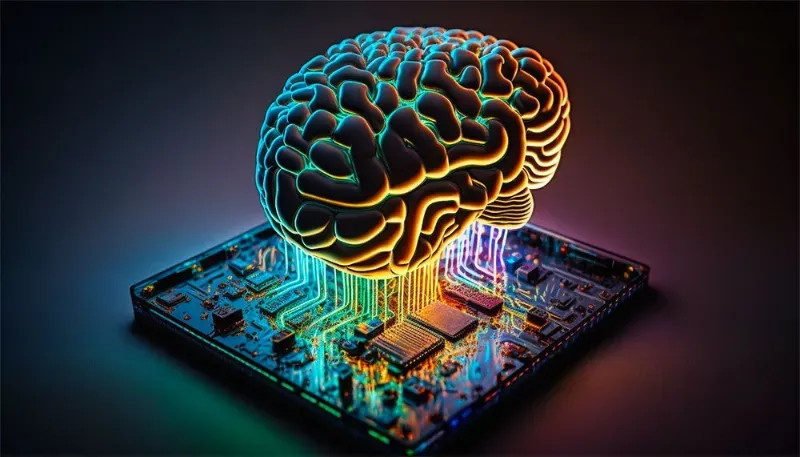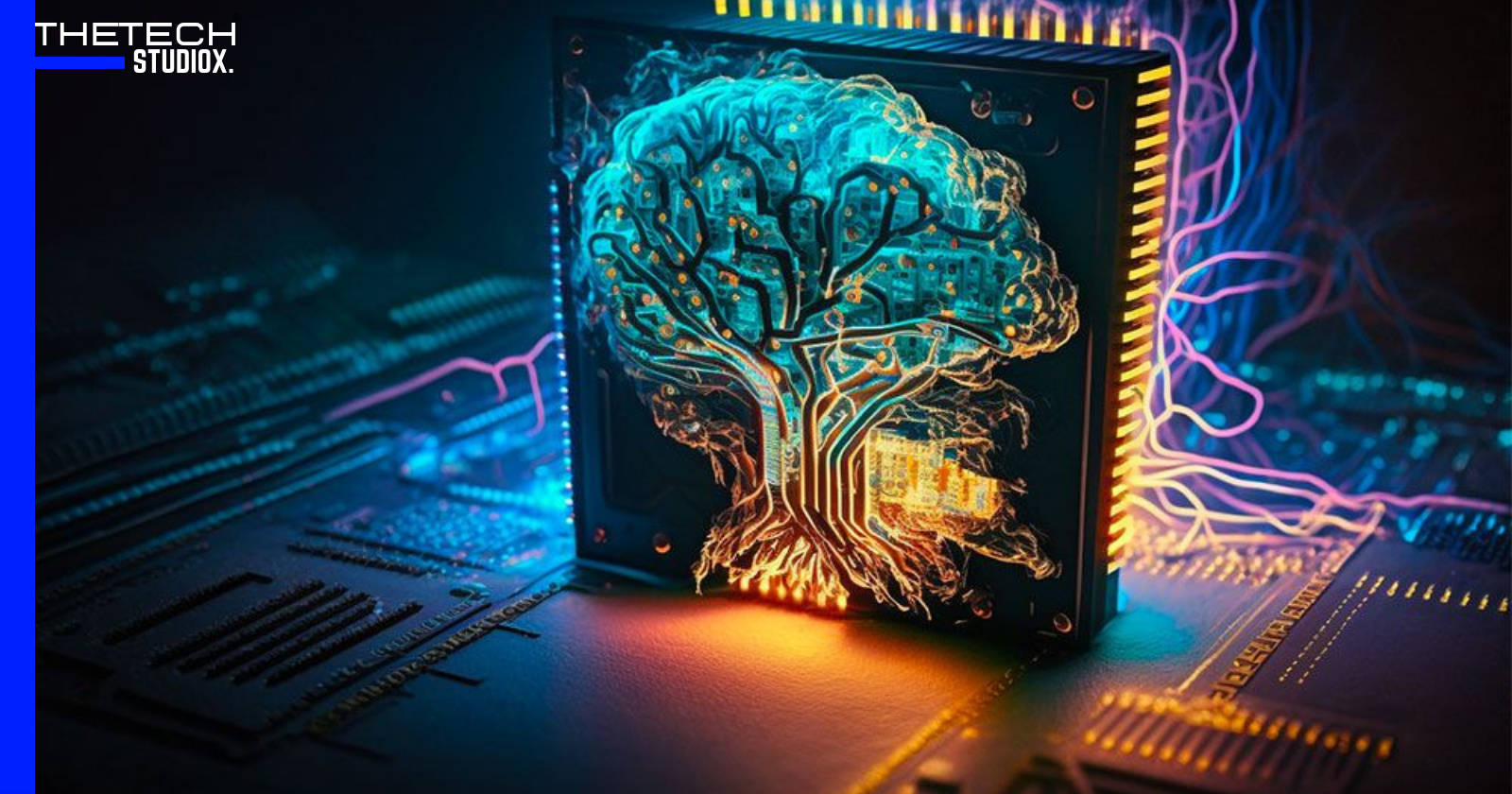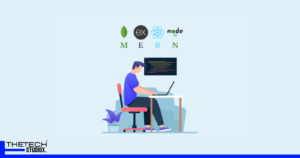Table of Contents
Introduction to Neuromorphic Computing
Neuromorphic computing, inspired by the intricate workings of the human brain, is revolutionizing artificial intelligence (AI) technology. By mimicking the neural architecture of the brain, this innovative approach is opening new frontiers in AI development. Let’s delve into the integration of neuromorphic computing in embedded systems for edge devices, exploring its current state, applications, and future implications across various industries.
Understanding Neuromorphic Computing
Neuromorphic computing, a convergence of biology, mathematics, computer science, electronic engineering, and physics, seeks to emulate the human brain’s functionality in computer systems. At its core, it involves modeling computer systems after the structure and processes of the human nervous system.
Mimicking Neural Components
Neuromorphic systems typically incorporate elements such as neurons and synapses, akin to those found in the human brain. Neurons transmit information through chemical and electronic signals, while synapses facilitate connections between neurons.
Applications in AI and Beyond
Neuromorphic computing holds vast potential across various domains, from AI to autonomous systems like robotics and self-driving vehicles.

The Current Landscape of Neuromorphic Chips
While the commercial adoption of neuromorphic hardware is still evolving, notable advancements have been made in the development of neuromorphic chips.
Notable Neuromorphic Chips
IBM’s TrueNorth: With 1 million neurons and 256 million synapses, TrueNorth is a pioneer in neuromorphic hardware, offering significant processing power with relatively low power consumption.
Akida by BrainChip: Featuring 1.2 million neurons and 10 billion synapses, Akida specializes in AI hardware and can be seamlessly integrated into various devices like smartphones and drones.
Loihi by Intel: Optimized for neural network workloads, Loihi simulates 130,000 neurons on each chip, contributing to advancements in AI research.
Research Phase Projects
Projects like NeuRam3, supported by the European Union, signify ongoing efforts to push the boundaries of neuromorphic computing. While in the research phase, these endeavors lay the groundwork for future innovations.
Neuromorphic Computing in Embedded Systems for Edge Devices
In the realm of cutting-edge technology, the integration of neuromorphic computing into embedded systems for edge devices marks a significant leap forward. Let’s delve deeper into how this innovative approach is shaping the landscape of computing.
Enhanced Integration and Efficiency
Neuromorphic computing offers a unique advantage by seamlessly integrating processing power and memory within embedded systems. This integration mitigates the bottlenecks that often hinder data processing efficiency, ensuring smooth operation even in resource-constrained environments.
Optimal Energy Consumption
One of the standout features of neuromorphic hardware is its ability to operate with minimal energy consumption. Unlike traditional computing systems that continuously access data from main memory, neuromorphic hardware activates only when necessary, conserving power and maximizing efficiency. This makes it particularly well-suited for edge devices where energy efficiency is paramount.
Harnessing Parallelism for Speed
Parallelism lies at the heart of neuromorphic computing’s prowess. By leveraging parallel processing, these systems can execute multiple tasks simultaneously, leading to unparalleled speeds and low latency. This capability is invaluable for edge devices that demand real-time responsiveness and rapid decision-making.
Impact Across Industries
The implications of neuromorphic computing in embedded systems extend across various industries. From healthcare to transportation, its ability to optimize edge devices has far-reaching implications:
Healthcare: In the healthcare sector, embedded systems powered by neuromorphic computing can revolutionize patient care. For instance, medical devices equipped with advanced processing capabilities can analyze data in real-time, facilitating early detection of health issues and enabling timely interventions.
Transportation: In the realm of transportation, neuromorphic computing holds promise for enhancing the safety and efficiency of autonomous vehicles. By enabling quick decision-making with minimal latency, these systems can navigate complex environments and mitigate potential risks on the road.
Paving the Way for Innovation
As neuromorphic computing continues to evolve, it opens doors to a new wave of innovation. Developers are exploring novel applications and use cases, pushing the boundaries of what’s possible with embedded edge AI. From smart cities to industrial automation, the potential applications of this technology are limitless.
Future Implications and Challenges
As neuromorphic computing continues to evolve, its impact on various industries and the challenges associated with its commercialization become increasingly apparent.
Transformative Potential Across Industries
From healthcare to finance and autonomous vehicles, neuromorphic computing is poised to revolutionize diverse sectors. Applications such as real-time medical diagnostics, instant financial transactions, and seamless autonomous driving underscore its transformative potential.
Overcoming Development Challenges
Despite its promise, the widespread adoption of neuromorphic computing faces several hurdles. Challenges include the development of affordable hardware, the integration of effective software, and the cultivation of a skilled workforce proficient in neuromorphic technology.
Conclusion
Neuromorphic computing represents a groundbreaking advancement in AI and edge computing, offering unparalleled efficiency and performance. By emulating the human brain’s capabilities, it holds the key to unlocking transformative applications across industries. As research and development efforts continue, the future of neuromorphic computing promises to redefine the boundaries of technological innovation.
FAQs
How does neuromorphic computing differ from traditional computing?
Neuromorphic computing mimics the brain’s neural architecture, enabling efficient parallel processing and low-power operation, unlike traditional binary-based computing.
What are some real-world applications of neuromorphic computing?
Neuromorphic computing can be applied in various domains, including healthcare for real-time diagnostics, finance for instant transactions, and autonomous vehicles for rapid decision-making.
What challenges hinder the commercialization of neuromorphic computing?
Challenges include the development of affordable hardware, the integration of compatible software, and the cultivation of a skilled workforce adept in neuromorphic technology.
How does neuromorphic computing enhance edge devices?
By optimizing processing efficiency and minimizing energy consumption, neuromorphic computing enables edge devices to perform complex tasks in real-time, enhancing user experiences and functionality.
What role does parallelism play in neuromorphic computing?
Parallelism allows neuromorphic chips to process multiple tasks simultaneously, akin to the brain’s ability to handle multiple stimuli concurrently, resulting in efficient and rapid computation.




Your point of view caught my eye and was very interesting. Thanks. I have a question for you.